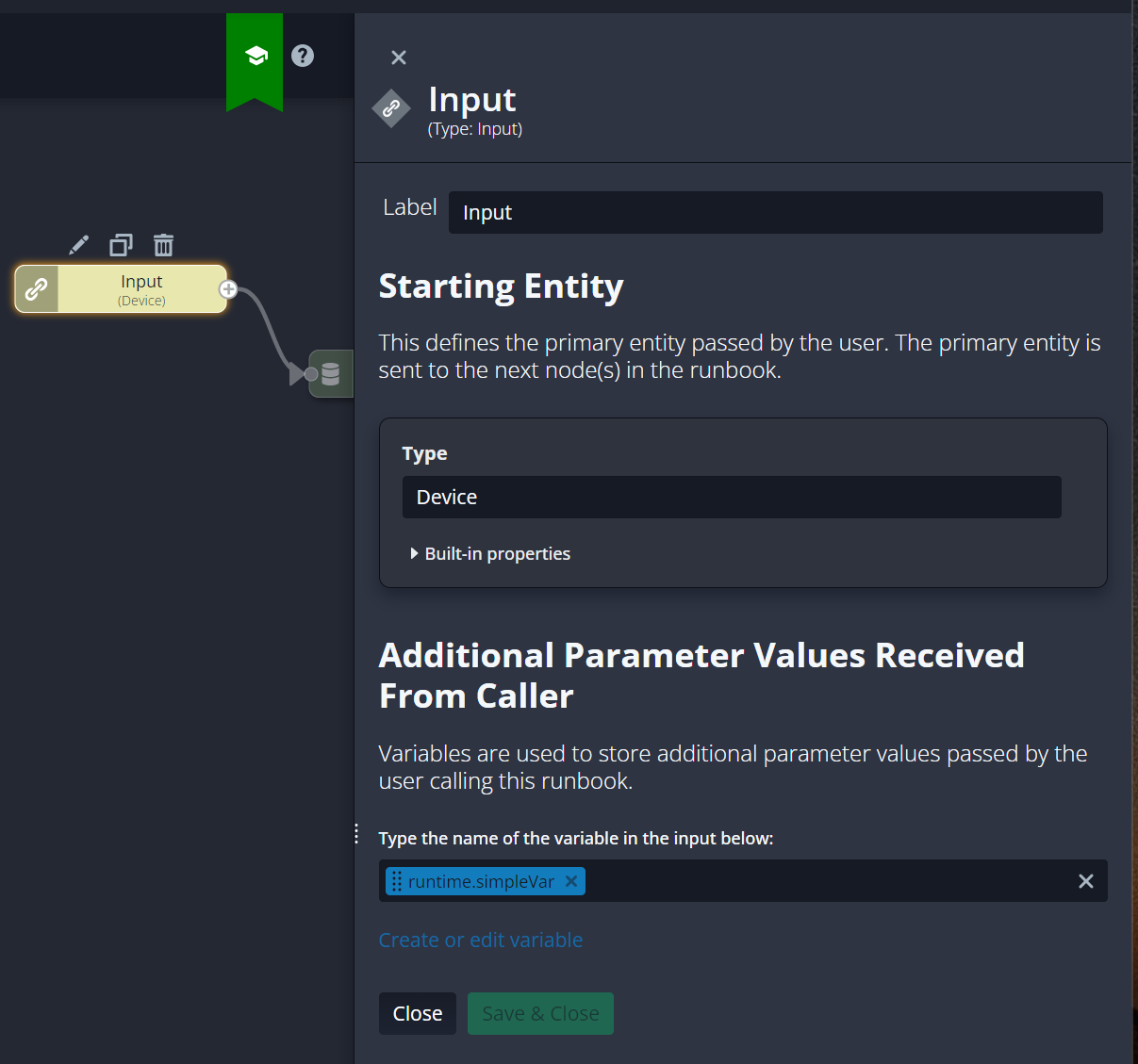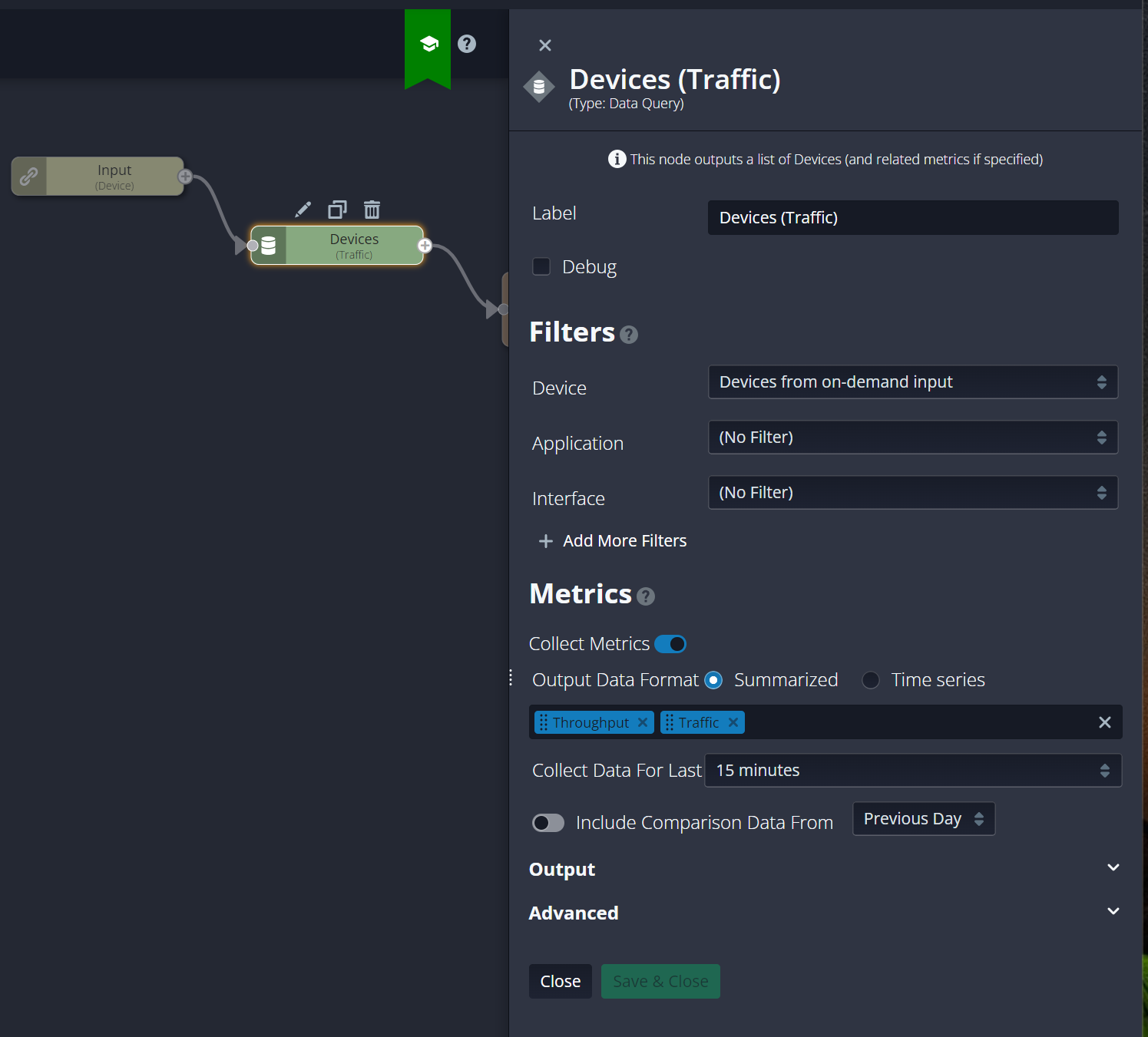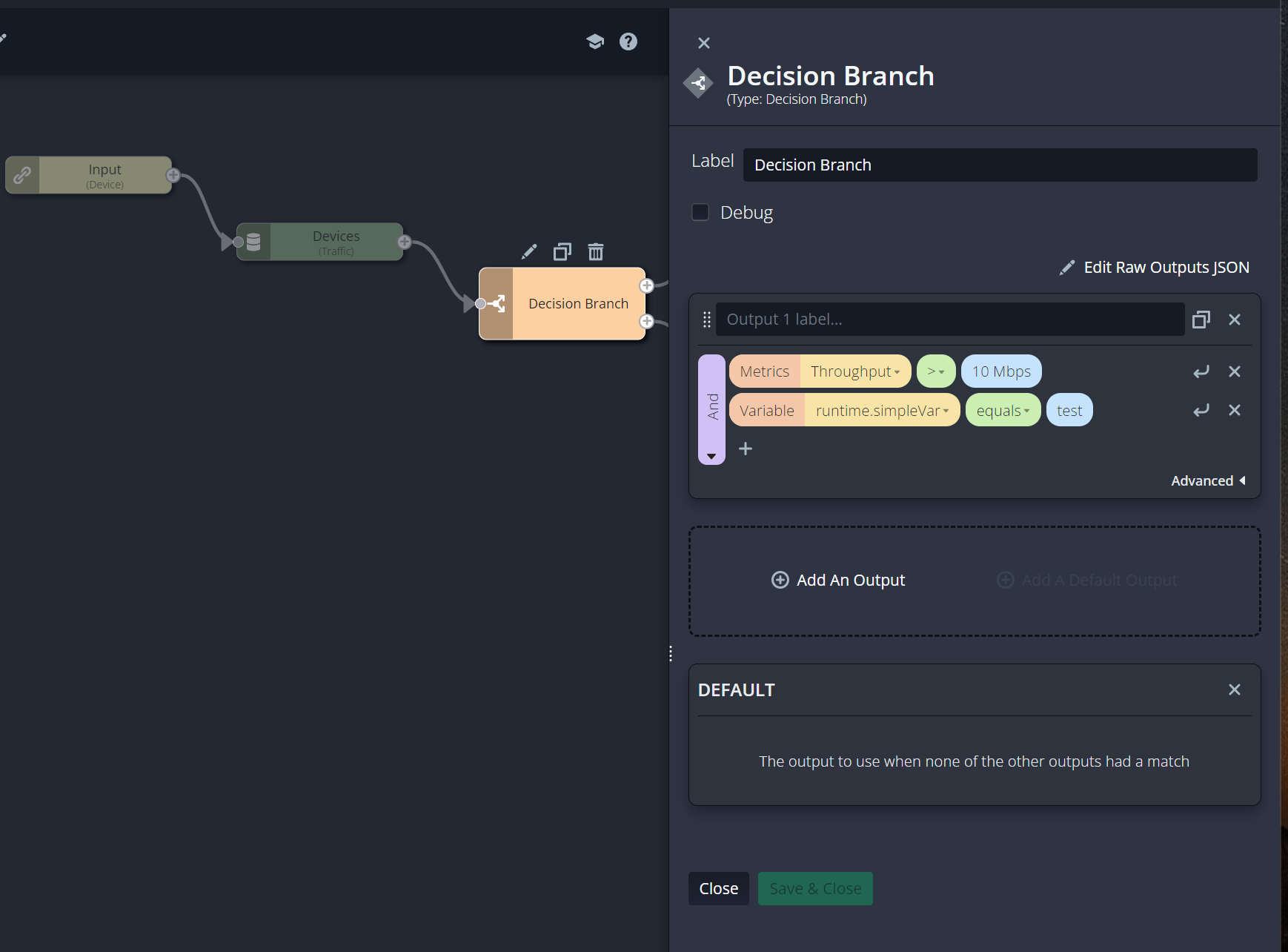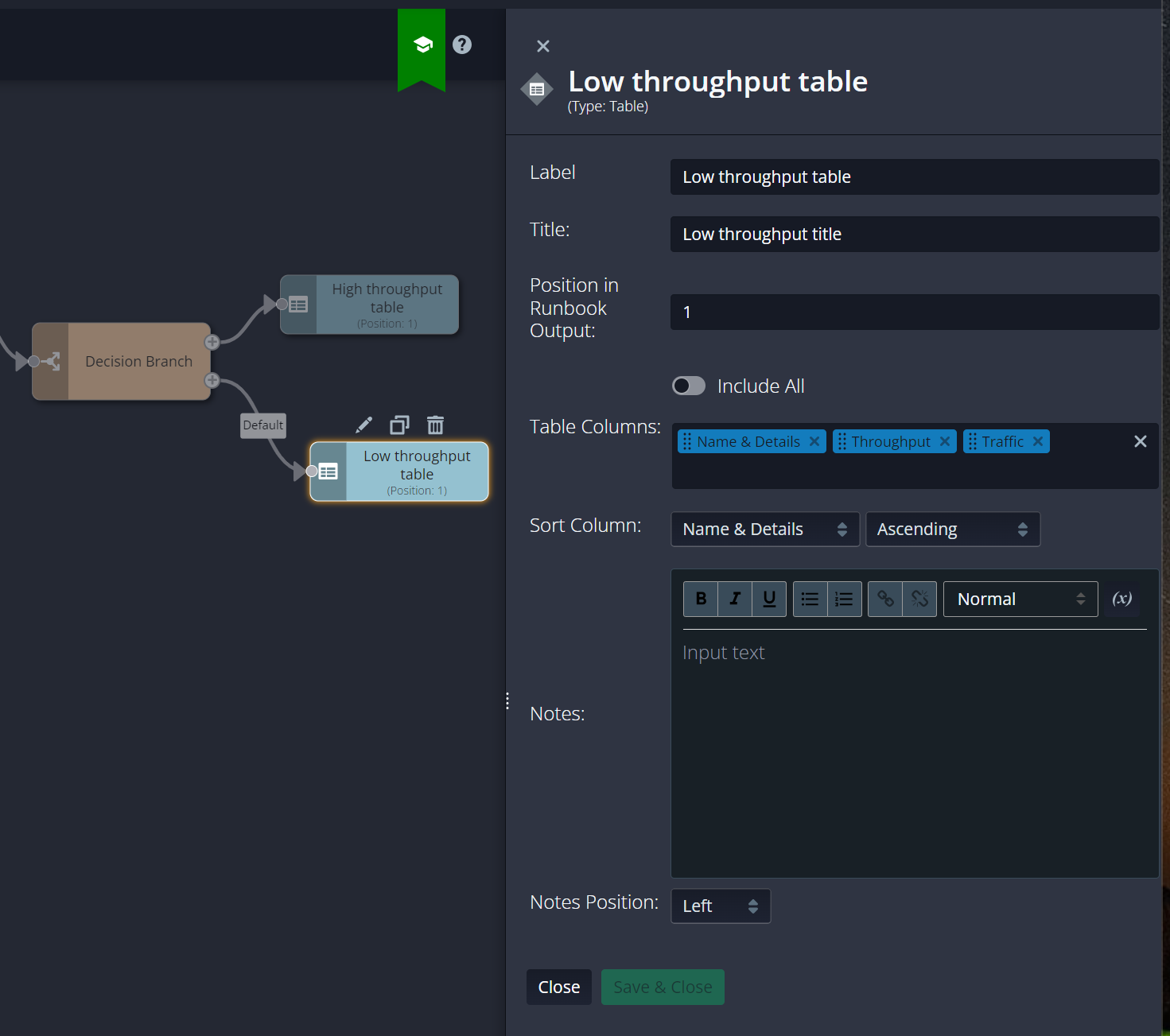On-Demand Runbook Example
This simple example illustrates the use of on-demand runbooks. It's likely that your purposes will require you to define larger, more sophisticated runbooks than this, but this one provides a starting point to familiarize you with the fundamentals.
This on-demand runbook starts with an Input node that uses a device as its starting entity. The Devices (Traffic) data query node queries that device input for Throughput and Traffic data, which it forwards to a Decision Branch node. The Decision Branch node evaluates the data it receives; if Throughput is greater than 10 Mbps, a table for high throughput values will be shown. If the Decision Branch node receives a runtime variable named "test", a table for low throughput values will be shown instead.

Taking each node in turn and examining its properties:
-
The Input node specifies "Device" as the primary entity; this is the entity type for which the runbook is executed.
Note: There is a runtime variable named "simpleVar" (defined previously) that is carried with the device data.
-
The Devices (Traffic) data query node queries for device data from on-demand input; that is, from the Input node. Collect Metrics is enabled, and the Throughput and Traffic metrics are specified explicitly for collection.

-
The Decision Branch node evaluates two conditions to produce output: if the value of the Throughput metric is greater than 10 Mbps and if the value of the "simpleVar" runtime variable is "test".

-
The High Throughput Table node outputs three columns: Name & Details, Throughput, and Traffic.

-
The Low Throughput Table node also outputs three columns: Name & Details, Throughput, and Traffic.

Execute the runbook from the On-Demand runbooks page to see the resulting analysis. For example:
